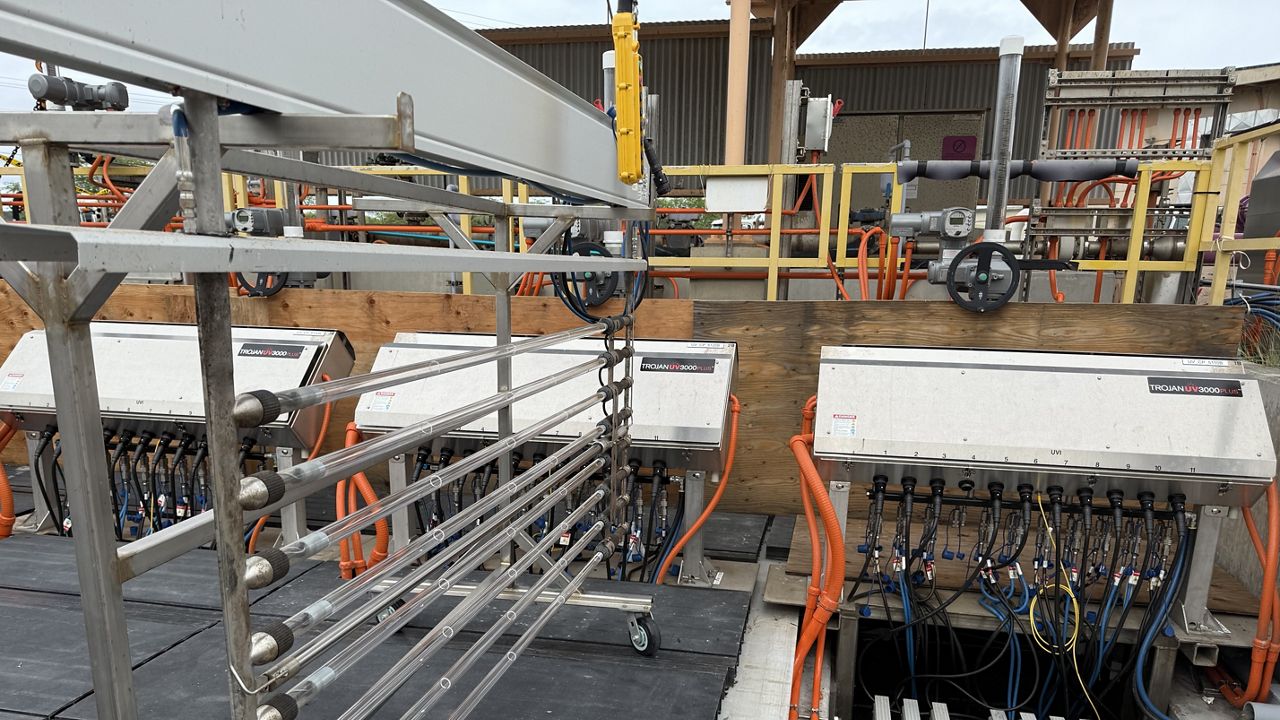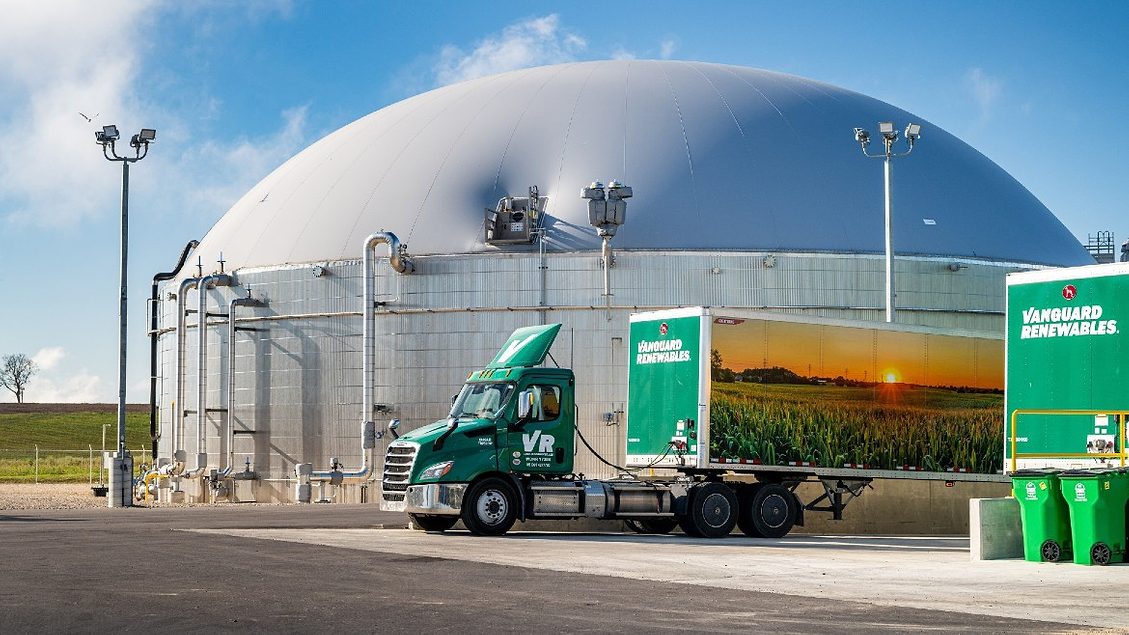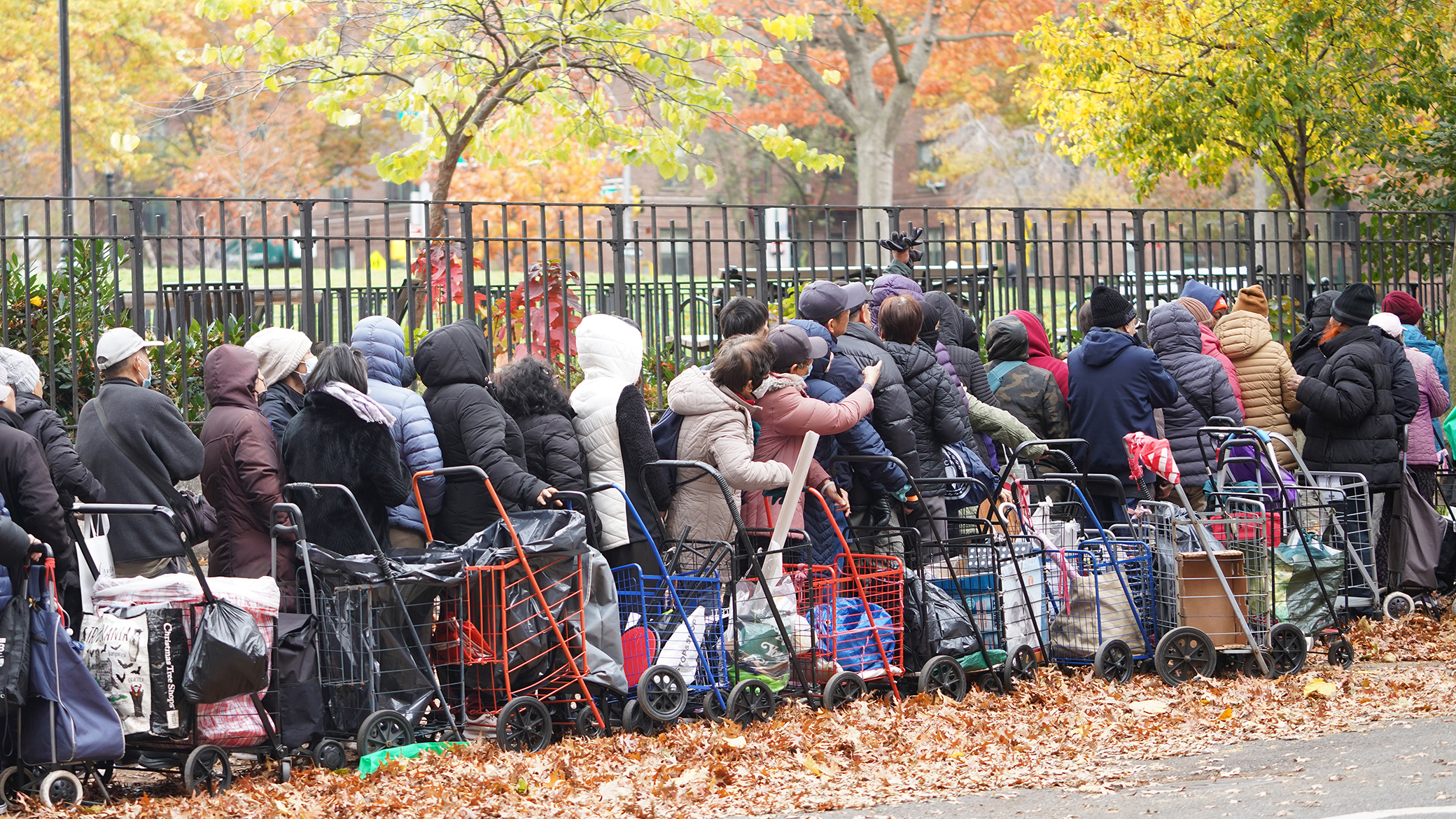Promote inclusive and sustainable economic growth, employment and decent work for all
The UN explains: Roughly half the world’s population still lives on the equivalent of about US$2 a day. And in too many places, having a job doesn’t guarantee the ability to escape from poverty. This slow and uneven progress requires us to rethink and retool our economic and social policies aimed at eradicating poverty.
The UN has defined 12 Targets and 17 Indicators for SDG 8. Targets specify the goals and Indicators represent the metrics by which the world aims to track whether these Targets are achieved. Below we quote the original text of all Targets and show the data on the agreed Indicators.
How is the world doing on this goal?
Target 8.1: Sustainable Economic Growth
UN definition: Sustain per capita economic growth in accordance with national circumstances and, in particular, at least 7 per cent gross domestic product growth per annum in the least developed countries.
GDP per capita growth rate
Definition: Indicator 8.1.1 is annual growth rate of real GDP per capita.
This is measured as the annual percentage growth in gross domestic product (GDP) per capita based on constant local currency.
Goal: Sustain per capita economic growth in accordance with national circumstances and, in particular, at least 7 per cent gross domestic product growth per annum in the least developed countries through 2030.
More research: Further data and research on this topic can be found at the Our World in Data entry on Economic Growth.
Additional charts:
Gross Domestic Product (GDP) per capita
Target 8.2: Diversify, innovate and upgrade for economic productivity
UN definition: Achieve higher levels of economic productivity through diversification, technological upgrading and innovation, including through a focus on high-value added and labour-intensive sectors.
GDP per capita growth rate per employed person
Definition: Indicator 8.2.1 is annual growth rate of real GDP per employed person.
This is measured as the annual change in real gross domestic product (GDP) per employed person. It provides an overall measure of the change in productivity of a country's labour force and use of resources.
Goal: Achieve higher levels of economic productivity through diversification, technological upgrading and innovation, including through a focus on high-value added and labour-intensive sectors by 2030.
More research: Further data and research on this topic can be found at the Our World in Data entry on Economic Growth.
Additional charts:
Gross Domestic Product (GDP) per capita
Target 8.3: Promote policies to support job creation and growing enterprises
UN definition: Promote development-oriented policies that support productive activities, decent job creation, entrepreneurship, creativity and innovation, and encourage the formalization and growth of micro-, small- and medium-sized enterprises, including through access to financial services.
Informal employment
Definition: Indicator 8.3.1 is the proportion of informal employment in non-agriculture employment, by sex.
This is measured as employment in the informal economy as a percentage of total non-agricultural employment. This includes all jobs in unregistered and/or small-scale private unincorporated enterprises that produce goods or services meant for sale or barter.
Goal: Promote development-oriented policies that support productive activities, decent job creation, entrepreneurship, creativity and innovation by 2030.
More research: Further data and research on this topic can be found at the Our World in Data entry on Female Labor Supply.
Target 8.4: Improve resource efficiency in consumption and production
UN definition: Improve progressively, through 2030, global resource efficiency in consumption and production and endeavour to decouple economic growth from environmental degradation, in accordance with the 10‑Year Framework of Programmes on Sustainable Consumption and Production, with developed countries taking the lead.
Material footprint
Definition: Indicator 8.4.1 is material footprint, material footprint per capita, and material footprint per GDP.
Material Footprint (MF) is the attribution of global material extraction to domestic final demand of a country. The total material footprint is the sum of the material footprint for biomass, fossil fuels, metal ores and non-metal ores.
Data on material footprints are outdated and unavailable for years following 2010.
Goal: Improve progressively, through 2030, global resource efficiency in consumption and production and endeavour to decouple economic growth from environmental degradation.
Domestic material consumption
Definition: Indicator 8.4.2 is domestic material consumption, domestic material consumption per capita, and domestic material consumption per GDP.
Material Footprint (MF) is the attribution of global material extraction to domestic final demand of a country. The total material footprint is the sum of the material footprint for biomass, fossil fuels, metal ores and non-metal ores.
Domestic Material Consumption (DMC) is a production-side measure which does not account for supply chain inputs or exports, meaning a country could have a lower DMC value if it outsources a large proportion of its materials. Data on material footprints are outdated and unavailable for years following 2010.
Goal: Improve progressively, through 2030, global resource efficiency in consumption and production and endeavour to decouple economic growth from environmental degradation.
Target 8.5: Full employment and decent work with equal pay
UN definition: By 2030, achieve full and productive employment and decent work for all women and men, including for young people and persons with disabilities, and equal pay for work of equal value.
Hourly earnings
Definition: Indicator 8.5.1 is the average hourly earnings of female and male employees, by occupation, age and persons with disabilities.
Average earnings are reported for male and female employees, but not available across countries for further breakdowns.
Goal: By 2030, achieve full and productive employment and decent work for all women and men, including for young people and persons with disabilities, and equal pay for work of equal value.
More research: Further data and research on this topic can be found at the Our World in Data entries on Female Labor Supply, Working Hours and our post Six key facts about the gender pay gap.
Hourly earnings
Definition: Indicator 8.5.2 is the unemployment rate, by sex, age and persons with disabilities.
Unemployment rate is measured as the share of the labor force that is without work but available for and seeking employment. This is available for the total population, in addition to breakdown by sex.
Goal: By 2030, achieve full and productive employment and decent work for all women and men, including for young people and persons with disabilities.
Target 8.6: Promote youth employment, education and training
UN definition: By 2020, substantially reduce the proportion of youth not in employment, education or training.
Youth employment, education and training
Definition: Indicator 8.6.1 is the proportion of youth (aged 15–24 years) not in education, employment or training.
Current data for this indicator reports the share of young people (aged 15-29 years) not in education, employment or training (NEET) in a given year.
Goal: Substantially reduce the proportion of youth not in employment, education or training.
Unlike most SDG targets set for the year 2030, this is set to be achieved by 2020.
More research: Further data and research on this topic can be found at the Our World in Data entry on Tertiary Education.
Target 8.7: End modern slavery, trafficking, and child labour
UN definition: Take immediate and effective measures to eradicate forced labour, end modern slavery and human trafficking and secure the prohibition and elimination of the worst forms of child labour, including recruitment and use of child soldiers, and by 2025 end child labour in all its forms.
Child labour
Definition: Indicator 8.7.1 is the proportion and number of children aged 5–17 years engaged in child labour, by sex and age.
Current data for this indicator reports the share of children aged 5-17 years old in employment (working for at least one hour in week previous to the survey). This is also shown available by sex.
Goal: End child labour in all its forms by 2025.
More research: Further data and research on this topic can be found at the Our World in Data entry on Child Labor.
Additional charts:
Average weekly working hours of children
Target 8.8: Protect labour rights and promote safe working environments
UN definition: Protect labour rights and promote safe and secure working environments for all workers, including migrant workers, in particular women migrants, and those in precarious employment.
Occupational injuries
Definition: Indicator 8.8.1 is the frequency rates of fatal and non-fatal occupational injuries, by sex and migrant status.
Data for this indicator reports the frequency rates of non-fatal and fatal occupational injuries by country. This is measured as the number of injuries per 100,000 employees.
Goal: Protect labour rights and promote safe and secure working environments for all workers by 2030.
Compliance of labour rights
Definition: Indicator 8.8.2 is the Level of national compliance with labour right (freedom of association and collective bargaining) based on International Labour Organization (ILO) textual sources and national legislation.
Goal: Protect labour rights and promote safe and secure working environments for all workers by 2030.
Target 8.9: Promote beneficial and sustainable tourism
UN definition: By 2030, devise and implement policies to promote sustainable tourism that creates jobs and promotes local culture and products.
Tourism contribution to GDP
Definition: Indicator 8.9.1 is tourism direct GDP as a proportion of total GDP and in growth rate.
Goal: By 2030, devise and implement policies to promote sustainable tourism that creates jobs and promotes local culture and products.
More research: Further data and research on this topic can be found at the Our World in Data entry on Tourism.
Additional charts:
Number of tourist arrivals
Target 8.10: Universal access to banking, insurance and financial services
UN definition: Strengthen the capacity of domestic financial institutions to encourage and expand access to banking, insurance and financial services for all.
Access to financial services
Definition: Indicator 8.10.1 is the (a) Number of commercial bank branches per 100,000 adults and (b) number of automated teller machines (ATMs) per 100,000 adults.
Data presented here details the number of commercial bank branches and ATMs per 100,000 people in a given country.
Goal: Strengthen the capacity of domestic financial institutions by 2030.
Population with financial account
Definition: Indicator 8.10.2 is the proportion of adults (15 years and older) with an account at a bank or other financial institution or with a mobile-money-service provider.
Data presented here details the percentage of adults (aged 15 and older) who report having an account (by themselves or together with someone else) at a bank or another type of financial institution.
Goal: Encourage and expand access to banking, insurance and financial services for all by 2030.
Additional charts:
Registered mobile money reports by region
Target 8.A: Increase aid for trade support
UN definition: Increase Aid for Trade support for developing countries, in particular least developed countries, including through the Enhanced Integrated Framework for Trade-related Technical Assistance to Least Developed Countries.
Aid for trade
Definition: Indicator 8.A.1 is aid for trade commitments and disbursements.
Aid for Trade is reported here by recipient, as well as by donor country. This is measured as total Official Development Assistance (ODA) allocated to aid for trade in constant US$.
Goal: Increase Aid for Trade support for developing countries by 2030.
More research: Further data and research on this topic can be found at the Our World in Data entry on International Trade.
Target 8.B: Develop a global youth employment strategy
UN definition: By 2020, develop and operationalize a global strategy for youth employment and implement the Global Jobs Pact of the International Labour Organization.
Youth employment strategy
Definition: Indicator 8.B.1 is the Existence of a developed and operationalized national strategy for youth employment.
Goal: Develop and operationalize a global strategy for youth employment.
Unlike most SDG targets with a target for 2030, the goal date for this indicator is 2020.






























































